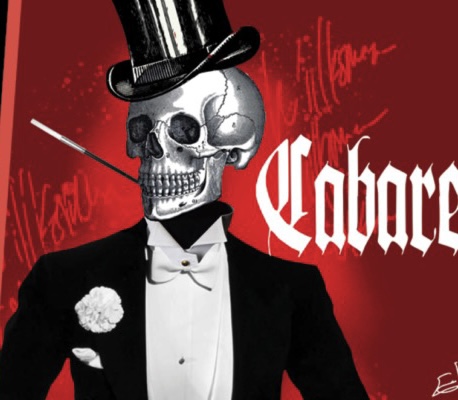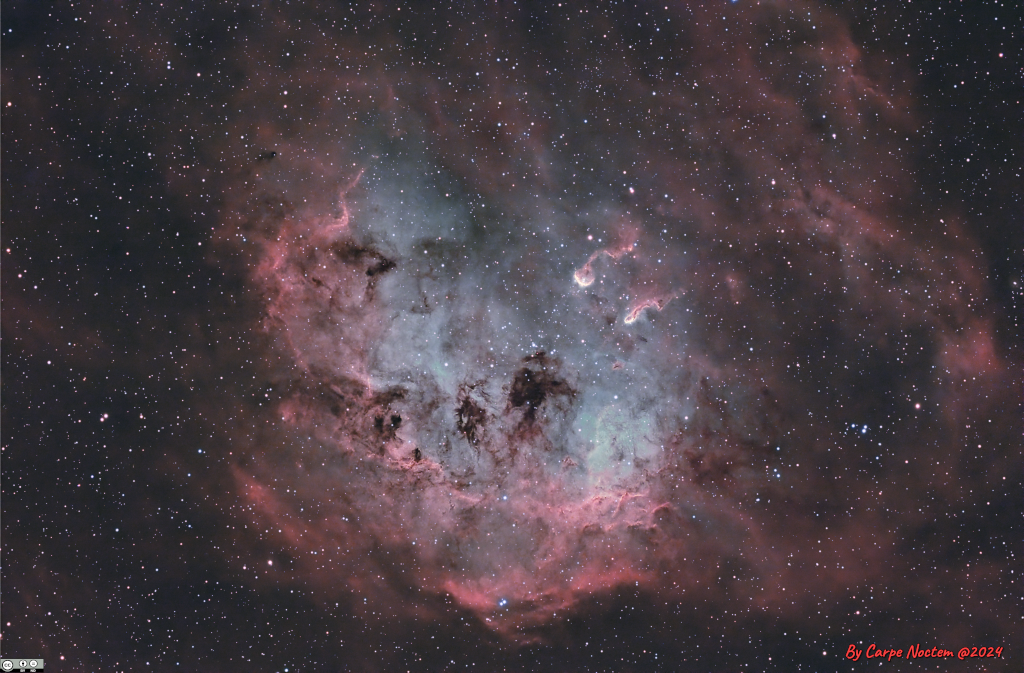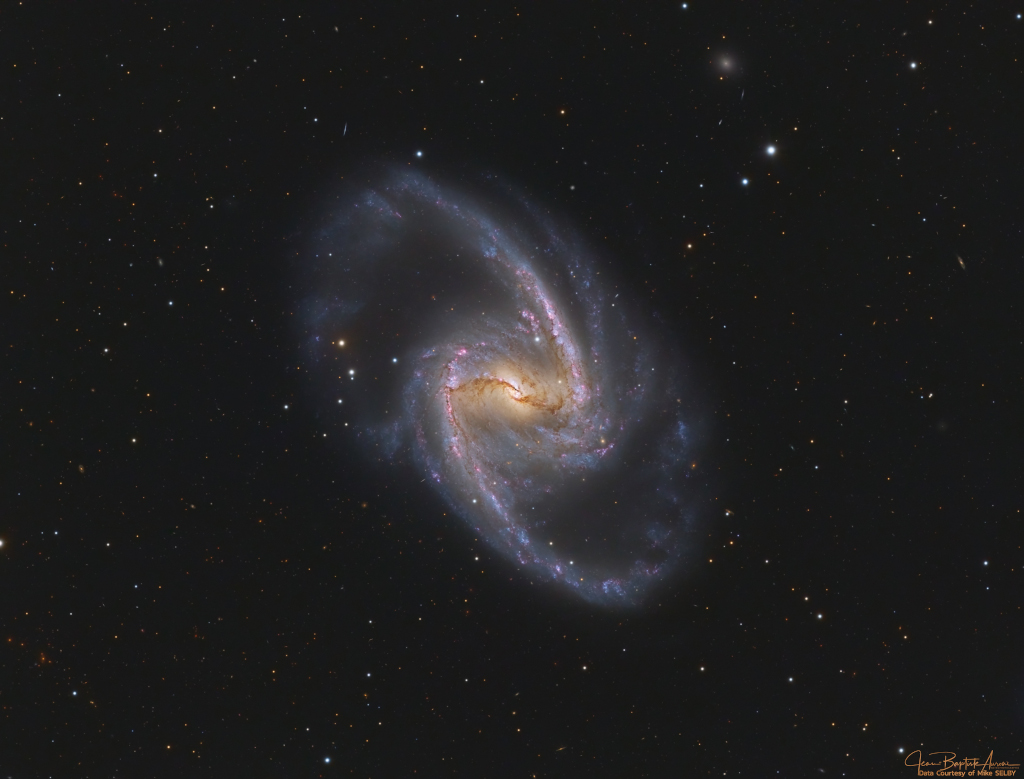Blog
John Watson Jr. (February 3, 1935 – May 17, 1996 Houston, TX), known professionally as Johnny “Guitar” Watson, was an American musician. A flamboyant showman and electric guitarist in the style of T-Bone Walker, his recording career spanned forty years, and encompassed rhythm and blues, funk and soul music.
Watson recorded throughout the 1950s and 1960s with some success. His 1954 instrumental “Space Guitar” was the first of his recordings to showcase his electric guitar playing. Watson’s creative reinvention in the 1970s with funk overtones, saw Watson have hits with “Ain’t That a Bitch” and “Superman Lover”. His highest charting single was 1977’s “A Real Mother for Ya”.
more...Lillian Hardin Armstrong (February 3, 1898 – August 27, 1971 Memphis, TN) was an American jazzpianist, composer, arranger, singer, and bandleader. She was the second wife of Louis Armstrong, with whom she collaborated on many recordings in the 1920s.
Her compositions include “Struttin’ with Some Barbecue”, “Don’t Jive Me”, “Two Deuces”, “Knee Drops”, “Doin’ the Suzie-Q”, “Just for a Thrill” (which was a hit when revived by Ray Charles in 1959), “Clip Joint”, and “Bad Boy” (a hit for Ringo Starr in 1978). Armstrong was inducted into the Memphis Music Hall of Fame in 2014.
more...Jakob Ludwig Felix Mendelssohn Bartholdy (3 February 1809 – 4 November 1847), widely known as Felix Mendelssohn, was a German composer, pianist, organist and conductor of the early Romanticperiod. Mendelssohn’s compositions include symphonies, concertos, piano music, organ music and chamber music. His best-known works include the overture and incidental music for A Midsummer Night’s Dream (which includes his “Wedding March“), the Italian Symphony, the Scottish Symphony, the oratorioSt. Paul, the oratorio Elijah, the overture The Hebrides, the mature Violin Concerto, the String Octet, and the melody used in the Christmas carol “Hark! The Herald Angels Sing“. Mendelssohn’s Songs Without Words are his most famous solo piano compositions.
Mendelssohn’s grandfather was the renowned Jewish philosopher Moses Mendelssohn, but Felix was initially raised without religion until he was baptised aged seven into the Reformed Christian church. He was recognised early as a musical prodigy, but his parents were cautious and did not seek to capitalise on his talent. His sister Fanny Mendelssohn received a similar musical education and was a talented composer and pianist in her own right; some of her early songs were published under her brother’s name and her Easter Sonata was for a time mistakenly attributed to him after being lost and rediscovered in the 1970s.
Mendelssohn enjoyed early success in Germany, and revived interest in the music of Johann Sebastian Bach, notably with his performance of the St Matthew Passion in 1829. He became well received in his travels throughout Europe as a composer, conductor and soloist; his ten visits to Britain – during which many of his major works were premiered – form an important part of his adult career. His essentially conservative musical tastes set him apart from more adventurous musical contemporaries such as Franz Liszt, Richard Wagner, Charles-Valentin Alkan and Hector Berlioz. The Leipzig Conservatory, which he founded, became a bastion of this anti-radical outlook. After a long period of relative denigration due to changing musical tastes and antisemitism in the late 19th and early 20th centuries, his creative originality has been re-evaluated. He is now among the most popular composers of the Romantic era.
more...Punxsutawney Phil did not see his shadow in front of thousands of spectators Friday morning at Gobbler’s Knob in Punxsutawney, Pennsylvania, part of the annual Groundhog Day tradition celebrated in the U.S. and Canada. That means, according to the legend, we’re in for an early spring.

Cabaret the Musical at the Mixed Blood Theater by Theatre 55 Friday February 2nd thru February 10th only 7 shows. Art returning to the West Bank. Music with Shirley Mier, Lyra Olson, Jeff Ruhnke, Brian Handeland, Bebe Keith and mick “bamboula” laBriola!

This cosmic view shows off an otherwise faint emission nebula IC 410, captured under clear Netherlands skies with telescope and narrowband filters. Above and right of center you can spot two remarkable inhabitants of the interstellar pond of gas and dust, known as the tadpoles of IC 410. Partly obscured by foreground dust, the nebula itself surrounds NGC 1893, a young galactic cluster of stars. Formed in the interstellar cloud a mere 4 million years ago, the intensely hot, bright cluster stars energize the glowing gas. Globules composed of denser cooler gas and dust, the tadpoles are around 10 light-years long and are likely sites of ongoing star formation. Sculpted by stellar winds and radiation their heads are outlined by bright ridges of ionized gas while their tails trail away from the cluster’s central young stars. IC 410 and embedded NGC 1893 lie some 10,000 light-years away, toward the nebula-rich constellation Auriga.

more...
Graham William Nash OBE (born 2 February 1942) is an English-American musician, singer and songwriter. He is known for his light tenor voice and for his contributions as a member of the Hollies and Crosby, Stills & Nash.
Nash is a photography collector and a published photographer. He was inducted into the Rock and Roll Hall of Fame as a member of Crosby, Stills & Nash in 1997 and as a member of the Hollies in 2010. He was appointed an Officer of the Order of the British Empire (OBE) in the 2010 Birthday Honours List for services to music and to charity.
Nash holds four honorary doctorates, including one from the New York Institute of Technology, one in music from the University of Salford in 2011 and one in fine arts from Lesley University in Cambridge, Massachusetts.
more...
Stan Getz (born Stanley Gayetski, February 2, 1927 – June 6, 1991) was an American jazz saxophonist. Playing primarily the tenor saxophone, Getz was known as “The Sound” because of his warm, lyrical tone, with his prime influence being the wispy, mellow timbre of his idol, Lester Young. Coming to prominence in the late 1940s with Woody Herman‘s big band, Getz is described by critic Scott Yanow as “one of the all-time great tenor saxophonists”. Getz performed in bebop and cool jazz groups. Influenced by João Gilberto and Antônio Carlos Jobim, he also helped popularize bossa nova in the United States with the hit 1964 single “The Girl from Ipanema“.
Stan Getz was born Stanley Gayetski on February 2, 1927, at St. Vincent’s Hospital in Philadelphia, Pennsylvania, United States. Getz’s father Alexander (“Al”) was a Ukrainian Jewish immigrant who was born in Mile End, London, in 1904, while his mother Goldie (née Yampolsky) was born in Philadelphia in 1907. His paternal grandparents Harris and Beckie Gayetski were originally from Kyiv, Ukraine, but had migrated to escape the anti-Jewish pogroms to Whitechapel, in the East End of London. While in England they owned the Harris Tailor Shop at 52 Oxford Street for more than 13 years. In 1913, Harris and Beckie emigrated to the United States with their three sons Al, Phil, and Ben, following their son Louis Gayetski who had emigrated to the US the year before. Getz’s original family name, “Gayetski”, was changed to Getz upon arrival in America.
https://www.youtube.com/watch?v=M3v7u1OmHZE&list=PL0q2VleZJVEkjEVGqDGrLdj0iHZQ_pAJG&index=7
more...Sonny Stitt (born Edward Hammond Boatner Jr.; February 2, 1924 – July 22, 1982) was an American jazz saxophonist of the bebop/hard bop idiom. Known for his warm tone, he was one of the best-documented saxophonists of his generation, recording more than 100 albums. He was nicknamed the “Lone Wolf” by jazz critic Dan Morgenstern because of his tendency to rarely work with the same musicians for long despite his relentless touring and devotion to jazz. Stitt was sometimes viewed as a Charlie Parker mimic, especially earlier in his career, but gradually came to develop his own sound and style, particularly when performing on tenor saxophone and even occasionally baritone saxophone.
Edward Hammond Boatner, Jr. was born in Boston, Massachusetts, and grew up in Saginaw, Michigan. He had a musical background: his father, Edward Boatner, was a baritone singer, composer, and college music professor; his brother was a classically trained pianist, and his mother was a piano teacher. He was placed for adoption in 1924 by his father and adopted by the Stitt family in Saginaw. He later began calling himself “Sonny”. While in high school in Saginaw, he played in the Len Francke Band, a local popular swing band.
In 1943, Stitt met Charlie Parker. As he often recalled, the two men had similar styles. Parker is alleged to have remarked, “Well, I’ll be damned, you sound just like me”, to which Stitt responded, “Well, I can’t help the way I sound. It’s the only way I know how to play.” Kenny Clarke said of Stitt, “Even if there had not been a Bird, there would have been a Sonny Stitt.
more...A Gitano-derived word, ‘Bulerias’ comes from the Spanish word ‘buleria,’ which means ‘torn-foolery’ or ‘ridicule.’ Many theories abound on its roots. A recent development of the Cante Gitano, it appears to be barely a century old. Still associated with the Gitanos, Bulerias is a toque with enormous flexibility, ever-evolving in style. Some like to call it ‘omnivorous,’ since much music from other genres, namely pop songs, even non-Spanish music, has been set to its compas. Often dances, including Soleares, Alegrias, and other toques, end with a flourish by introducing Bulerias at the climax.
more...Barred spiral galaxy NGC 1365 is truly a majestic island universe some 200,000 light-years across. Located a mere 60 million light-years away toward the faint but heated constellation Fornax, NGC 1365 is a dominant member of the well-studied Fornax Cluster of galaxies. This sharp color image shows the intense, reddish star forming regions near the ends of the galaxy’s central bar and along its spiral arms. Seen in fine detail, obscuring dust lanes cut across the galaxy’s bright core. At the core lies a supermassive black hole. Astronomers think NGC 1365’s prominent bar plays a crucial role in the galaxy’s evolution, drawing gas and dust into a star-forming maelstrom and ultimately feeding material into the central black hole.

more...
Joseph Leslie Sample (February 1, 1939– September 12, 2014 Houston, TX) was an American jazz keyboardist and composer. He was one of the founding members of The Jazz Crusaders in 1960, the band which shortened its name to “The Crusaders” in 1971. He remained a part of the group until its final album in 1991 and also the 2003 reunion album Rural Renewal.
Beginning in the late 1960s, he enjoyed a successful solo career and guested on many recordings by other performers and groups, including Miles Davis, George Benson, Jimmy Witherspoon, Michael Franks, B. B. King, Eric Clapton, Steely Dan, Joni Mitchell, Anita Baker, and the Supremes. Sample incorporated gospel, blues, jazz, latin, and classical forms into his music.
more...Sadao Watanabe (渡辺 貞夫, Watanabe Sadao, born 1 February 1933) is a Japanese jazz musician who plays alto saxophone and sopranino saxophone. He is known for his bossa nova recordings, although his work encompasses many styles, with collaborations from musicians all over the world.
Watanabe was born on 1 February 1933 in Utsunomiya, Japan. His father, a professional musician, sang and played the biwa. Watanabe was attracted to jazz from an early age, in part due to the strong cultural influence stemming from the American post-war presence in Japan. He learned the clarinet while in high school after convincing his father over the course of six weeks to buy him a second-hand instrument.
In 1951, Watanabe moved to Tokyo and began playing the alto saxophone. He started studying the flute in 1953 with Ririko Hayashi from the Tokyo Philharmonic Orchestra. Watanabe joined Toshiko Akiyoshi‘s Cozy Quartet and began leading the group when Akiyoshi moved to the USA.[1] By 1958, Watanabe had performed with leading musicians and quartets. In 1961, his first album as a leader, the self-titled Sadao Watanabe, was released.
more...Joe “Tricky Sam” Nanton (February 1, 1904 – July 20, 1946) was an American trombonist with the Duke Ellington Orchestra. A pioneer of the plunger mute, Nanton is notable for his use of the distinctive wah-waheffect.
He was born Joseph Irish Nanton in New York City, United States. His parents were John Barzly Nanton and Emily Irish, both immigrants from the British West Indies.
Nanton began playing professionally in Washington, D.C., with bands led by Cliff Jackson and banjoist Elmer Snowden.
From 1923 to 1924, Nanton worked with Frazier’s Harmony Five. A year later, he performed with Snowden. At the age of 22, Nanton found his niche in Duke Ellington’s Orchestra, when he reluctantly took the place of his friend Charlie Irvis in 1926, and remained with Ellington until his early death in 1946. Nanton, along with Lawrence Brown, anchored the trombone section.
more...James Mercer Langston Hughes (February 1, 1901 – May 22, 1967) was an American poet, social activist, novelist, playwright, and columnist from Joplin, Missouri. One of the earliest innovators of the literary art form called jazz poetry, Hughes is best known as a leader of the Harlem Renaissance. He famously wrote about the period that “the Negro was in vogue”, which was later paraphrased as “when Harlem was in vogue.”
Growing up in a series of Midwestern towns, Hughes became a prolific writer at an early age. He moved to New York City as a young man, where he made his career. He graduated from high school in Cleveland, Ohio, and soon began studies at Columbia University in New York City. Although he dropped out, he gained notice from New York publishers, first in The Crisis magazine and then from book publishers, and became known in the creative community in Harlem. He eventually graduated from Lincoln University. In addition to poetry, Hughes wrote plays and short stories. He also published several nonfiction works. From 1942 to 1962, as the civil rights movement gained traction, he wrote an in-depth weekly column in a leading black newspaper, The Chicago Defender.
more...More Posts
- World Music with Sabicas
- Daily Roots with Tommy McCook & the Aggrovators
- The Cosmos with Barnard 228
- Mick Jagger Day
- Charlie Persip Day
- Erskine Hawkins Day
- World Music with Aynur Doğan
- Daily Roots with Bob Marley
- The Cosmos with NGC 5866
- Steve Goodman Day
- Don Ellis Day
- World Music with Yuva Ratna Deepak Mehta
- Daily Roots with King Tubby
- The Cosmos with NGC 1569
- Charles McPherson Day
- Billy Taylor Day
- World Music with La Refrescante Banda Aljibe
- Daily Roots with Freddie McGregor
- The Cosmos with NGC 3359
- L. Subramaniam Day